Muy buenos días estimados amigos. Muy contenta de volver a escribir para la comunidad de @education porque es en este ámbito, educación, donde me he desarrollado tanto a nivel personal como profesional. Soy docente de dificultades para el aprendizaje y trabajo con niños que presentan trastornos del neurodesarrollo. Además, pienso que en la educación está el progreso de las personas, si concientizamos que educarnos nos hace mejores en cualquier ámbito en el que nos desempeñemos, donde quiera que trabajemos.

Hoy voy a desarrollar el tema sobre los procesos atencionales y el cambio que ha sido necesario introducir en la forma de atención psicopedagógica a partir de las nuevas investigaciones.
Hace algunos años se trabajaba con este tipo de actividades:
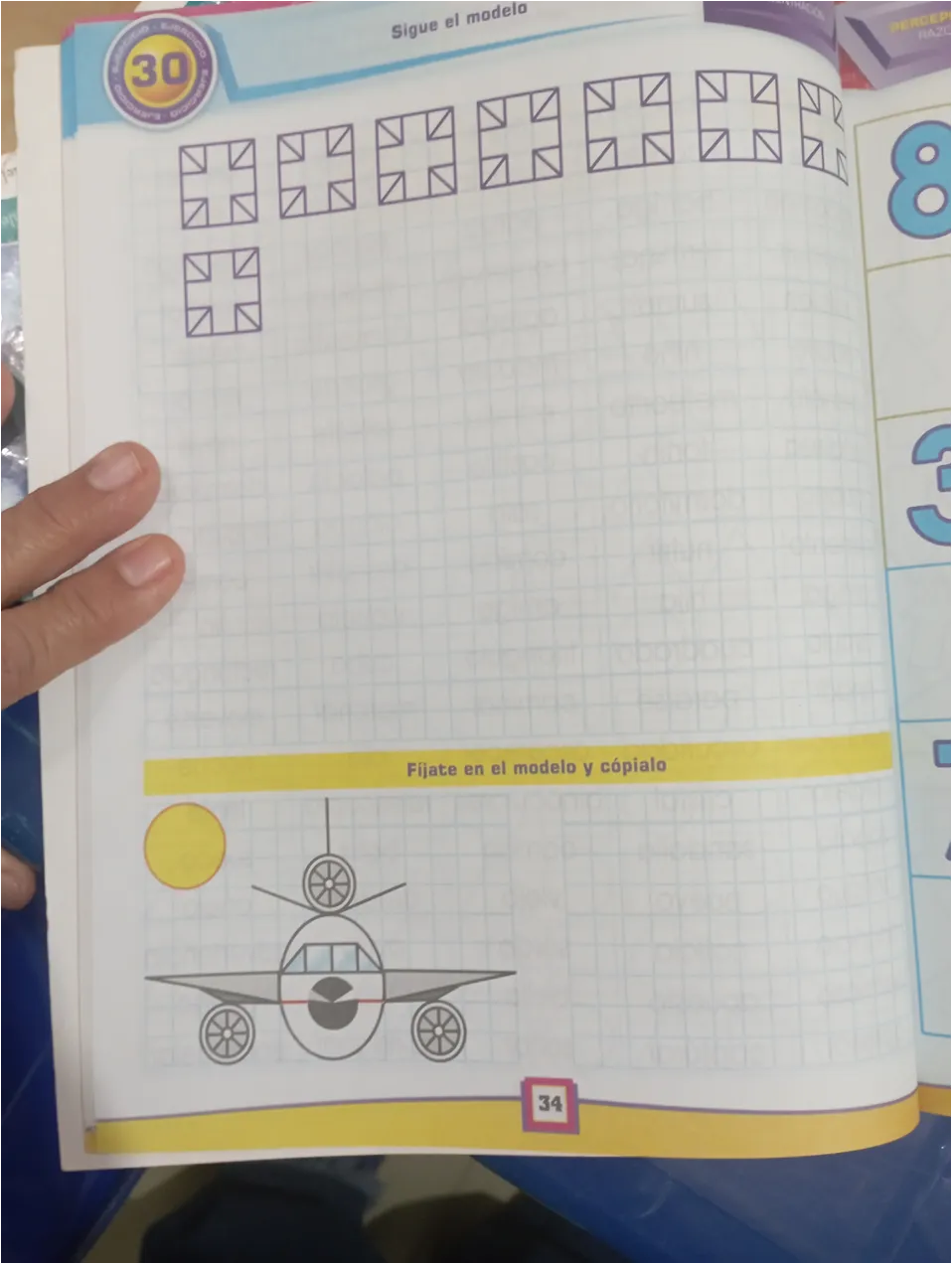
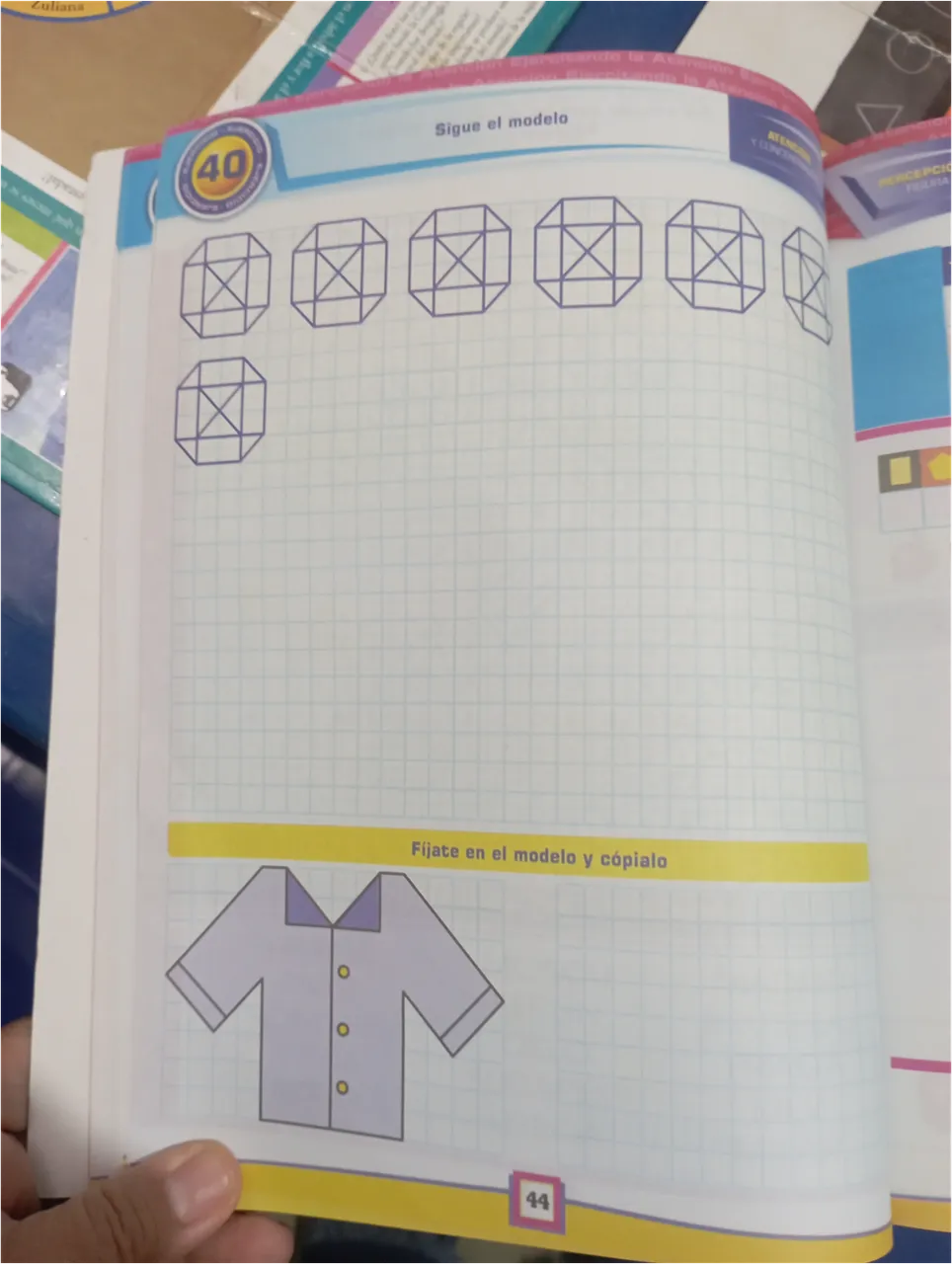
También se trabajaban de este tipo:
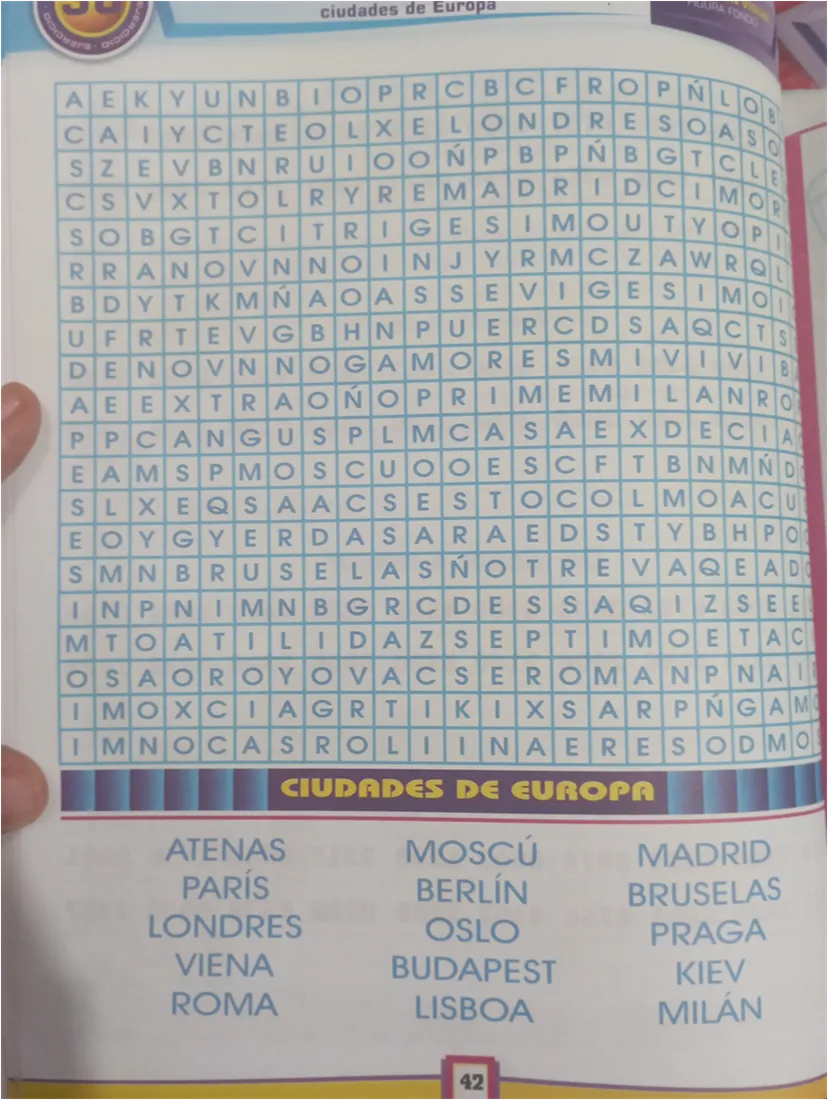
Básicamente, se colocaba la actividad al niño, instándolo a poner atención.

El estudio sobre la atención y la aparición del trastorno por déficit de atención con hiperactividad, Tdah, cambió en forma importante tanto las estrategias como las actividades con las que se venía trabajando los déficits atencionales de los niños.
la primera referencia científica que reconoce el TDAH como trastorno se atribuye al pediatra George F. Still, en una publicación de 1902, y estaba basada en la observación de niños con inatención y conducta hiperactiva e impulsiva.
Breve recorrido por la historia del TDAH
A partir de aquellos primeros hallazgos, los investigadores se han dado a la tarea de continuar los estudios sobre la atención. La aparición del Tdah, como condición compleja del desarrollo, continúa siendo objeto de análisis; pero existe el consenso que la deficiencia en esta competencia, tan importante en la vida de las personas, trae como consecuencia una disminución de la calidad de vida. Específicamente en los niños que asisten a la escuela. El compromiso puede manifestarse de las siguientes formas:
| Tdah | Algunas de las características más comunes observables en los niños. |
|---|---|
| 1. | Comenten errores por descuido. |
| 2. | Dificultad para prestar atención en forma continua en una actividad. |
| 3. | Dificultad para mantener la atención en tareas de esfuerzo mental sostenido. |
| 4. | No prestan atención a los detalles. |
| 5. | Dificultad para prestar atención en forma continua en una actividad. |
| 6. | Prestan atención solo a lo que le interesa; por ejemplo, a los deberes escolares no. |
| 7. | Olvidan los útiles escolares y/o los pierden. |
| 8. | Dejan hojas en blanco en lo cuadernos, escriben donde no es, no copian las clases completas. |
| 9. | Dificultades generales para mantener el orden, seguir instrucciones, para permanecer sentados. |
| 10. | Olvidan lo que tienen que hacer. |

Actualmente uno de los modelos explicativos mayormente aceptados para el Tdah, es el híbrido. La investigación la lidera el psicólogo Russell Barkley A partir de su teoría se propone que la afectación de las funciones ejecutivas son las responsables de la sintomatología que presentan las personas con déficit de atención.
¿Qué son las funciones ejecutivas?
Barkley las define como las acciones que interiorizamos en el pensamiento (voz de la mente), que dirigimos hacia nosotros mismos. Las funciones ejecutivas son aquellas acciones que nos permiten progresivamente alcanzar objetivos. Es decir, autorregular la conducta para inhibir todo aquello que nos impide organizarnos para alcanzar nuestras metas con óptimos resultados.
Esta es una de las posiciones teóricas sobre las que se ha fundamentado las nuevas estrategias, actividades y materiales para estimular los procesos de atención. Uno de los cambios significativos es desacoplar el interés central en el ejercicio y centrarlo en la estrategia de aplicación. La actividad se media a través de autoinstrucciones muy específicas y el monitoreo constante de cada uno de los pasos, los cuales garantizan la atención sostenida en la tarea hasta finalizarla, previa planificación de los pasos a seguir organizados por el propio estudiante.

Básicamente, se tratan de autoinstrucciones que el psicopedagogo enseña inicialmente al niño y que luego él interioriza como pensamiento dirigido a sí mismo para orientar cada paso de la actividad que realiza. Este proceso tiene varias pasos, que se podrían resumir de la siguiente forma, salvo algunas diferencias que dependen de la edad, del grado o nivel de escolaridad y la integridad cognitiva del niño:
| Pasos generales. | Programas cognitivos/conductuales de base autoinstruccional. |
|---|
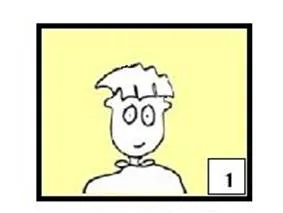 |Mira bien todo lo que tienes aquí. El niño debe revisar la actividad a realizar.
|Mira bien todo lo que tienes aquí. El niño debe revisar la actividad a realizar.
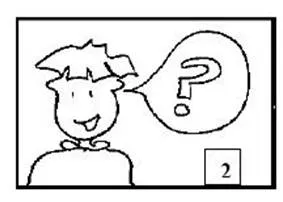 | ¿Qué vas a hacer? Si tiene ganado el proceso de lectura, debe leer la instrucción de la actividad; de lo contrario, puede comunicar oralmente su plan y/o el docente lo ayuda a elaborar uno.
| ¿Qué vas a hacer? Si tiene ganado el proceso de lectura, debe leer la instrucción de la actividad; de lo contrario, puede comunicar oralmente su plan y/o el docente lo ayuda a elaborar uno.
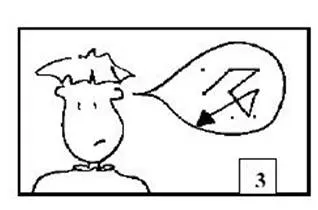 | ¿Cómo lo vas a hacer? Este quizás es el paso más importante, porque el niño debe expresar los pasos que considera más adecuados para realizar la actividad. Si no es capaz de hacerlo aún, el docente le ayuda.
| ¿Cómo lo vas a hacer? Este quizás es el paso más importante, porque el niño debe expresar los pasos que considera más adecuados para realizar la actividad. Si no es capaz de hacerlo aún, el docente le ayuda.
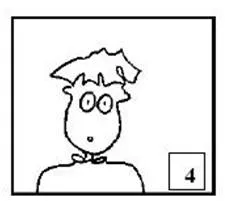 | Una vez que estamos seguros que el niño ha revisado su material, comprendido la actividad y realizado su plan de trabajo, le decimos que ya puede comenzar; además debemos monitorear constantemente para constatar que está siguiendo los pasos acordados.
| Una vez que estamos seguros que el niño ha revisado su material, comprendido la actividad y realizado su plan de trabajo, le decimos que ya puede comenzar; además debemos monitorear constantemente para constatar que está siguiendo los pasos acordados.
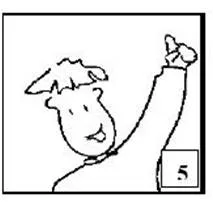 |El niño comienza a realizar la actividad. Nosotros debemos estar atentos a cada paso que él emplea; si observamos que no se ajusta al plan preestablecido, le instamos a que retome lo que expresó que haría.
|El niño comienza a realizar la actividad. Nosotros debemos estar atentos a cada paso que él emplea; si observamos que no se ajusta al plan preestablecido, le instamos a que retome lo que expresó que haría.
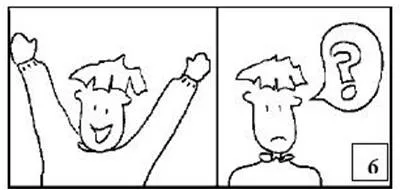 | ¿Cómo ha quedado? Ambos, docente y niño, revisan. Se realiza una valoración del número de errores y aciertos.
| ¿Cómo ha quedado? Ambos, docente y niño, revisan. Se realiza una valoración del número de errores y aciertos.
Finalmente se realiza una autoevaluación de la sesión de trabajo, donde el niño tiene la oportunidad de valorar su actuación. Es esta ficha:
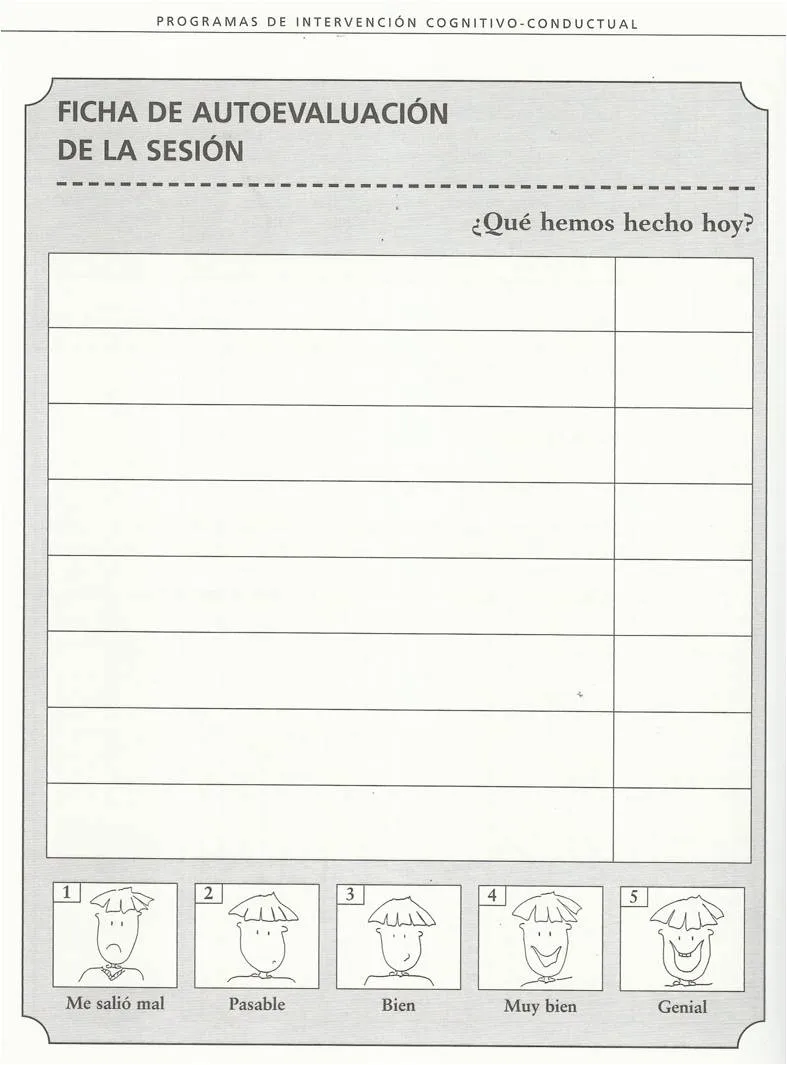
Esta forma de trabajar nos ha abierto las posibilidades para seleccionar diversidad de recursos que podemos aplicar a los niños para ayudarlos a mejorar sus niveles de atención. Llevo utilizando este procedimiento hace aproximadamente 20, años con resultados muy buenos y prometedores a mediano y largo plazo.

A continuación te voy a presentar ejemplos de actividades que se pueden aplicar utilizando las autoinstrucciones:
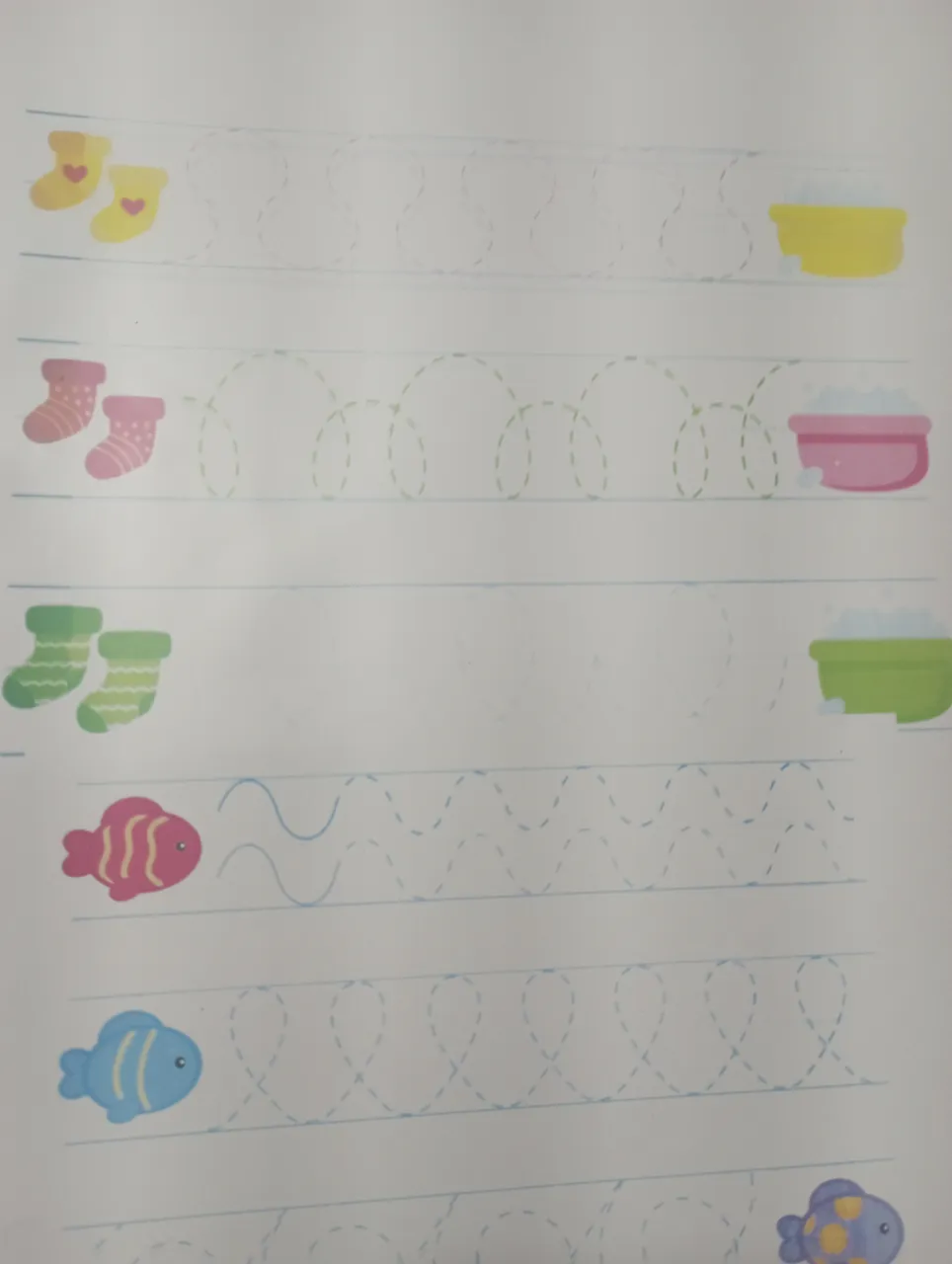
Repasa las líneas.
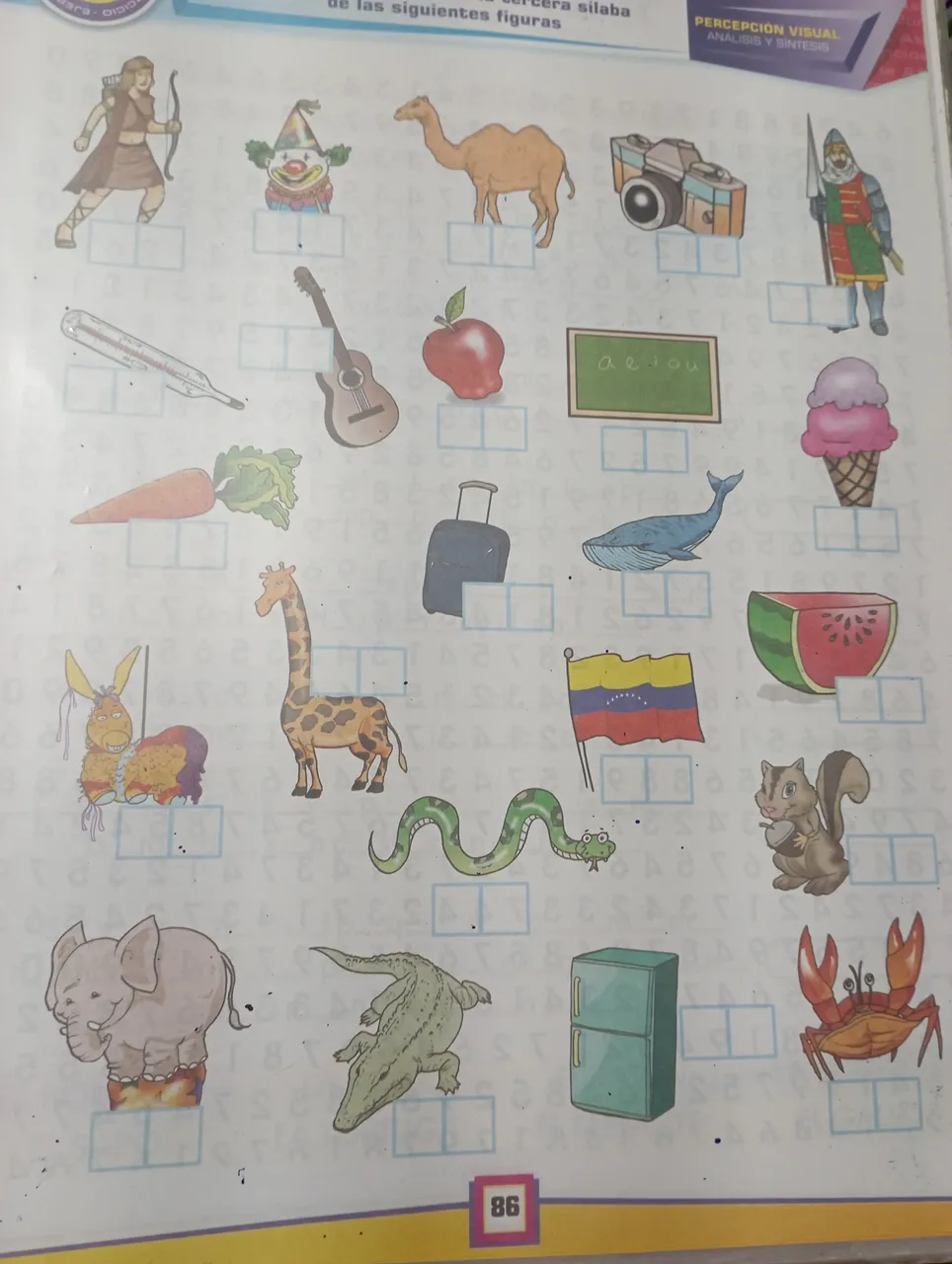
Escribe la primera y última letra de la palabra que representa la imagen.
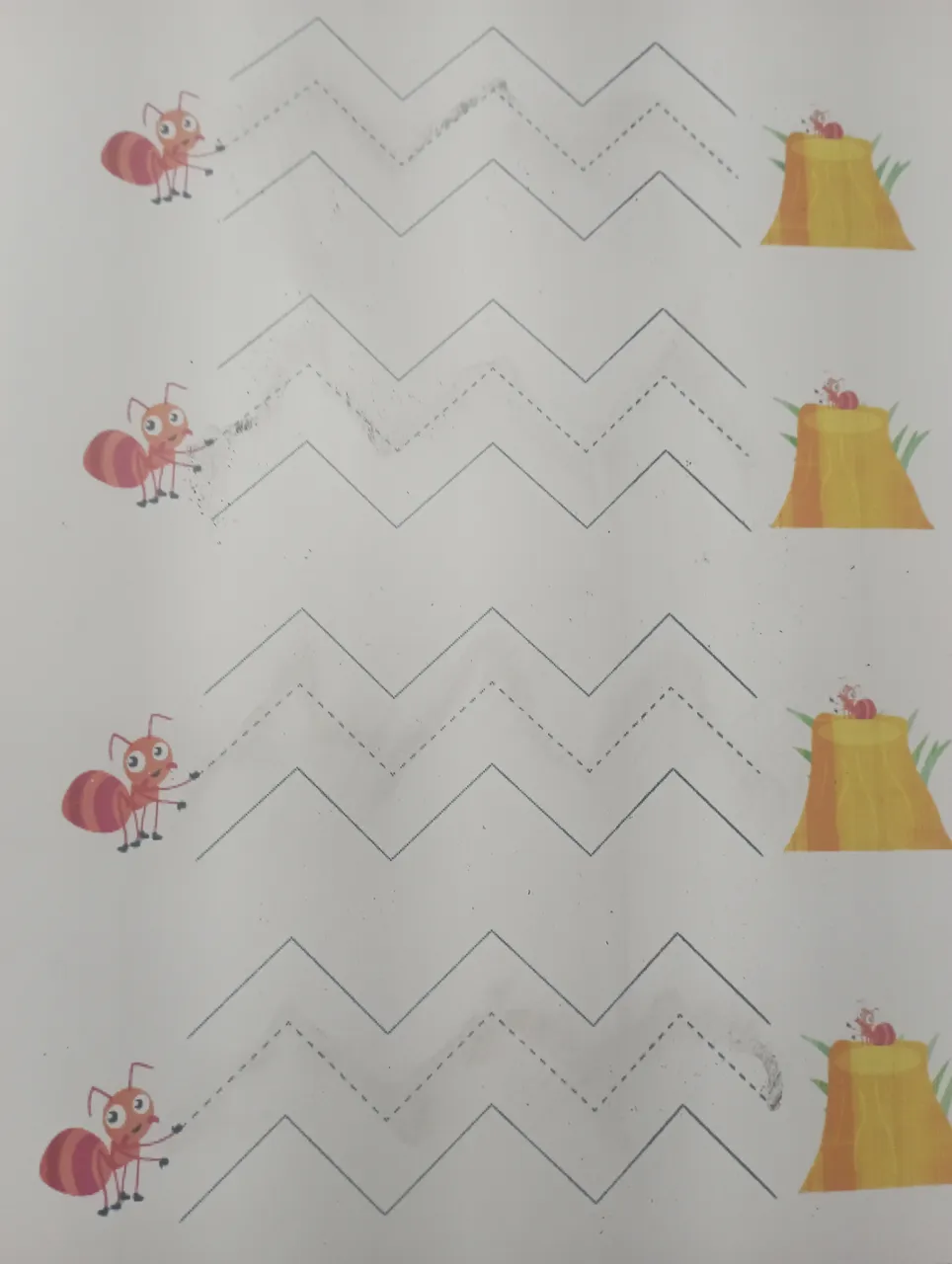
Repasa las líneas.
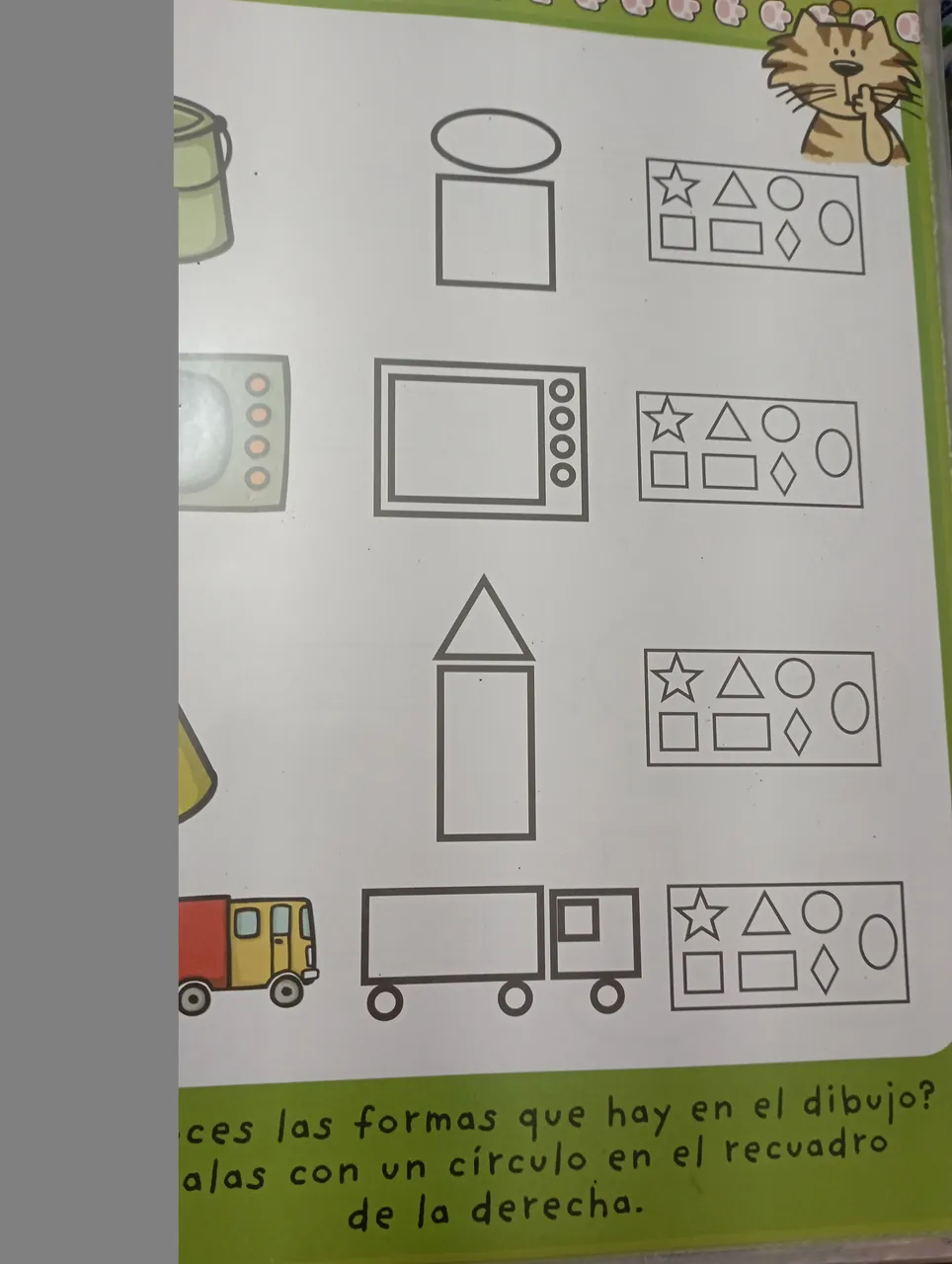
Relaciona las formas con el dibujo.
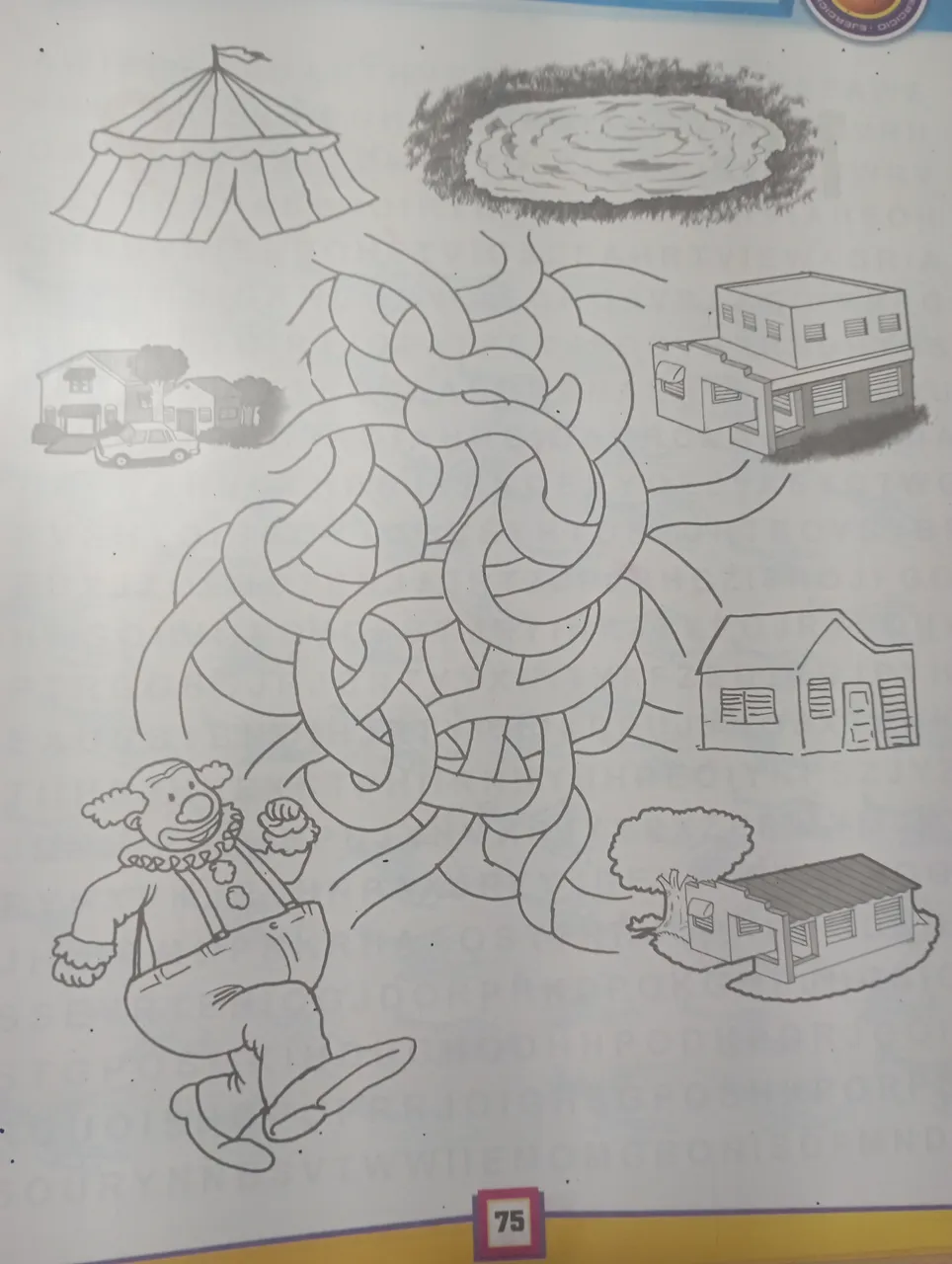
Muestra al payaso el camino al circo.
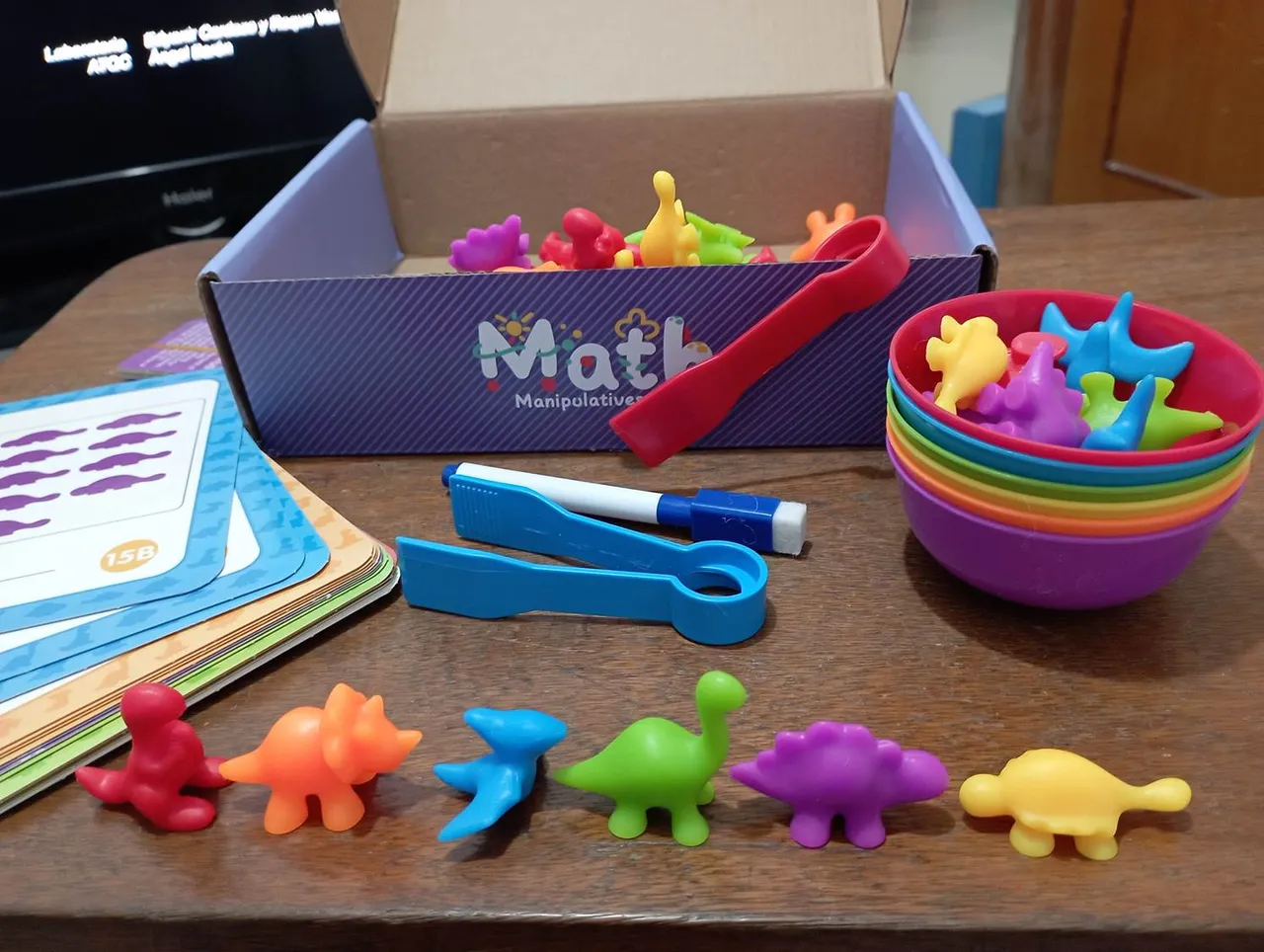
Clasificación de sinosaurios.
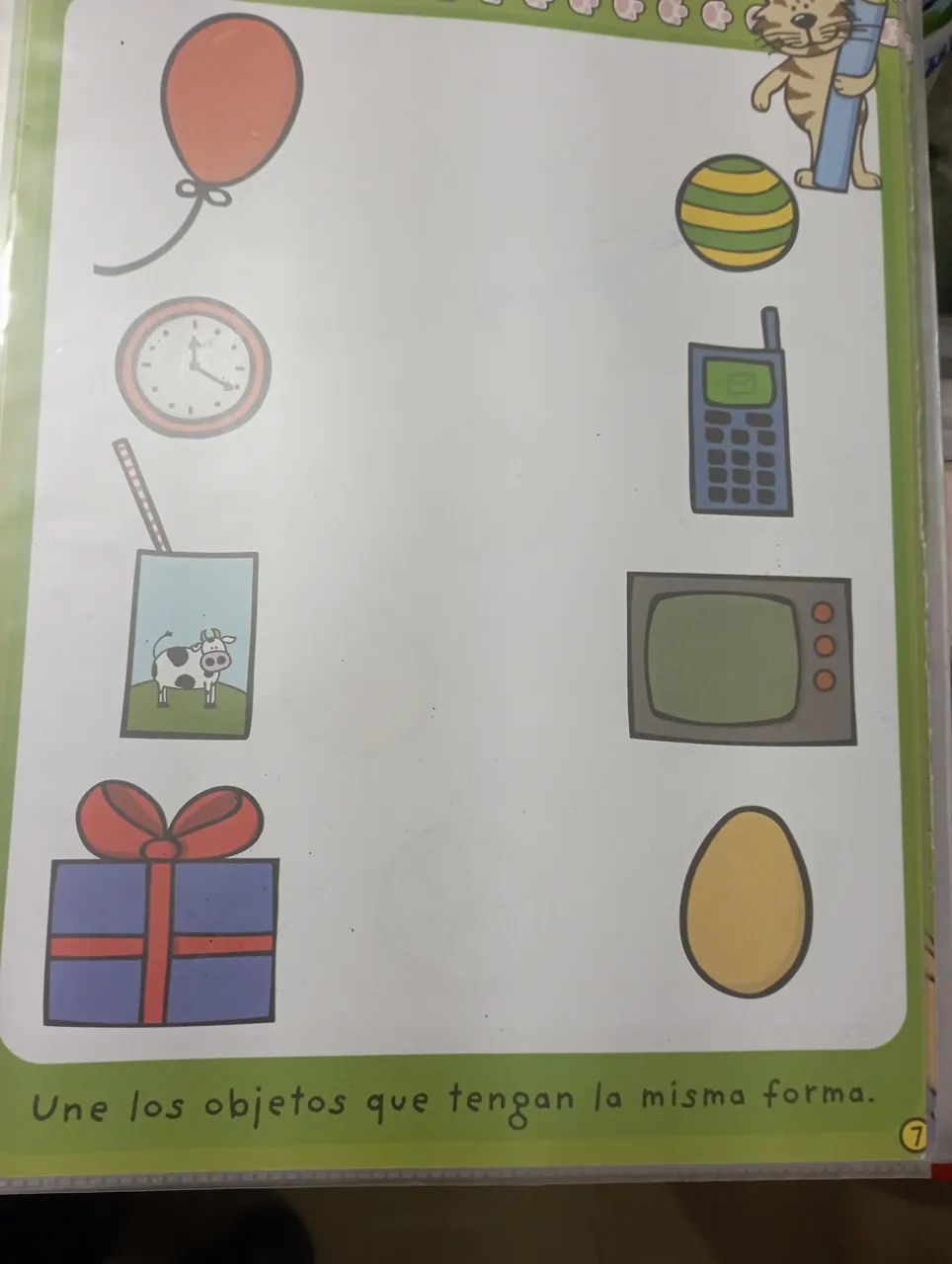
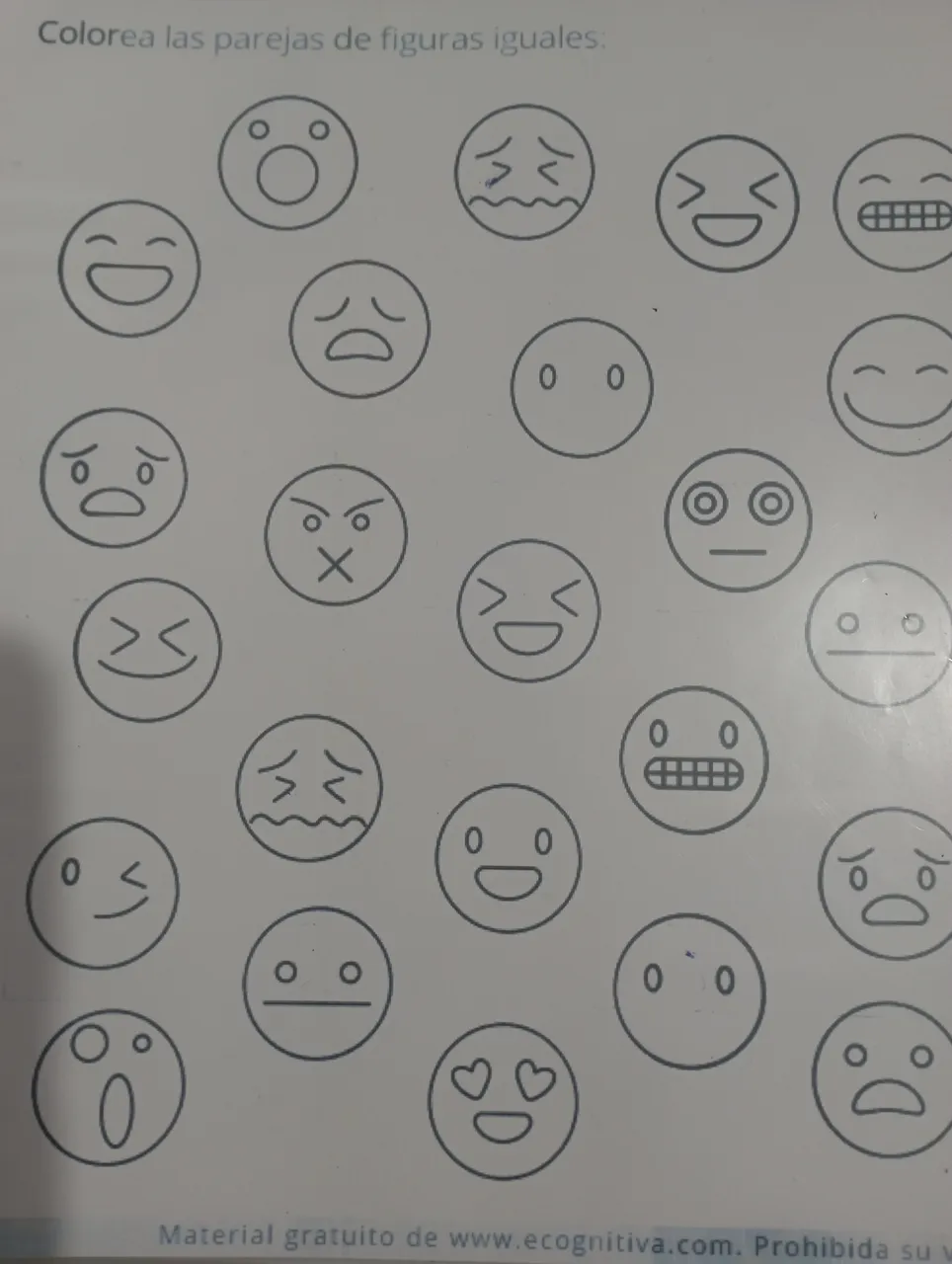

Esta es la ficha de autoevaluación de la sesión de trabajo.
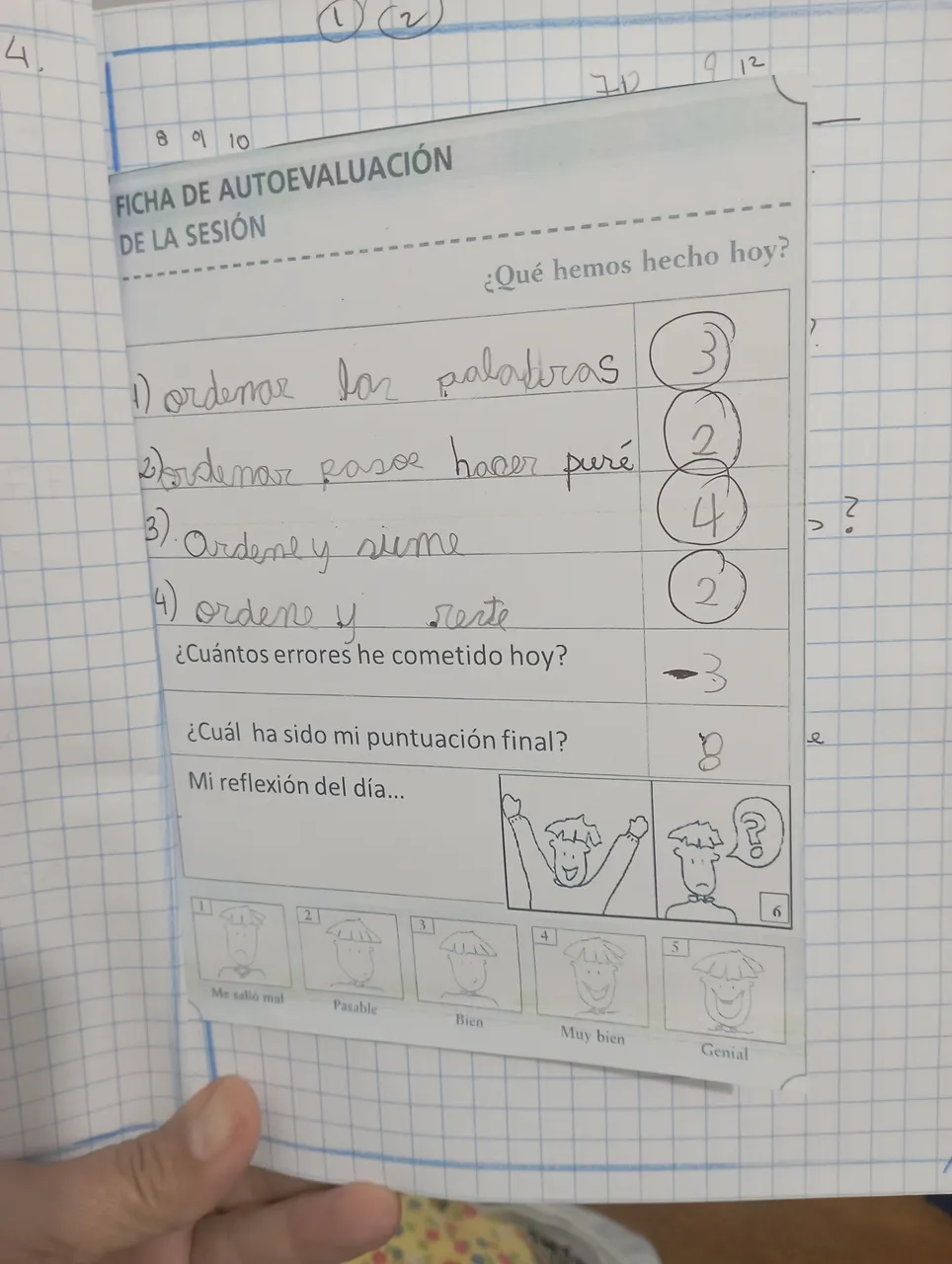

Nota final:
Los programas autoinstruccionales, de base cognitivo/conductuales, no se ajustan de igual forma a todos los niños. Las características de cada desarrollo son diferentes, con aspectos más permeables que otros. La experiencia me ha permitido valorar, desde la evaluación, cuál es el procedimiento más idóneo. Cabe destacar que para cada niño hay disponible una forma de abordaje; existe una respuesta para cada situación.

Ha sido muy grato escribir para esta comunidad y su gente.
Sobre las imágenes: las fotografías pertenecen a mi archivo y fueron tomadas con mi teléfono Redmi11. Pertenecen a las actividades que realizo a diario con lo niños.
El separador de párrafo y el banner lo realicé con el programa Powerpoint.
Ahora voy a realizar la traducción con la ayuda de Google.

Very good morning dear friends. Very happy to write again for the @education community because it is in this field, education, where I have developed both personally and professionally. I am a teacher of learning difficulties and work with children who have neurodevelopmental disorders. Furthermore, I think that education is where people's progress lies, if we become aware that educating ourselves makes us better in any field in which we work, wherever we work.

Today I am going to develop the topic about attentional processes and the change that has been necessary to introduce in the form of psychopedagogical attention based on new research.
A few years ago we worked with this type of activities:


They also worked like this:

Basically, the activity was placed on the child, urging him to pay attention.

The study on attention and the appearance of attention deficit hyperactivity disorder, ADHD, significantly changed both the strategies and activities with which attention deficits in children were being worked on.
The first scientific reference that recognizes ADHD as a disorder is attributed to pediatrician George F. Still, in a publication from 1902, and was based on the observation of children with inattention and hyperactive and impulsive behavior.
[Brief tour of the history of ADHD](https://tdah.som360.org/es/articulo/breve-recorrido-historia-tdah#:~:text=Pero%20la%20primera%20rereference%20cient%C3%ADfica ,and%20behavior%20hyperactive%20e%20impulsive.)
Based on those first findings, researchers have taken on the task of continuing studies on attention. The emergence of ADHD, as a complex developmental condition, continues to be the subject of analysis; But there is a consensus that a deficiency in this competence, so important in people's lives, results in a decrease in the quality of life. Specifically in children who attend school. Commitment can manifest itself in the following ways:
| ADHD | Some of the most common characteristics observable in children. |
|---|---|
| 1. | Make careless mistakes. |
| 2. | Difficulty paying attention continuously in an activity. |
| 3. | Difficulty maintaining attention in tasks of sustained mental effort. |
| 4. | They don't pay attention to details. |
| 5. | Difficulty paying attention continuously in an activity. |
| 6. | They pay attention only to what interests them; For example, not to school homework. |
| 7. | They forget their school supplies and/or lose them. |
| 8. | They leave blank pages in their notebooks, they write where they shouldn't, they don't copy the entire classes. |
| 9. | General difficulties maintaining order, following instructions, staying seated. |
| 10. | They forget what they have to do. |

Currently, one of the most widely accepted explanatory models for ADHD is the hybrid model. The research is led by the psychologist [Russell Barkley] (https://psicologiaymente.com/biografias/russell-barkley). Based on his theory, it is proposed that the impairment of executive functions is responsible for the symptoms presented by the people with attention deficit.
What are executive functions?
Barkley defines them as the actions that we internalize in thought (voice of the mind), which we direct towards ourselves. Executive functions are those actions that allow us to progressively achieve objectives. That is, self-regulate behavior to inhibit everything that prevents us from organizing ourselves to achieve our goals with optimal results.
This is one of the theoretical positions on which the new strategies, activities and materials to stimulate attention processes have been based. One of the significant changes is to decouple the central interest in exercise and focus it on the implementation strategy. The activity is mediated through very specific self-instructions and constant monitoring of each of the steps, which guarantee sustained attention to the task until it is finished, after planning the steps to follow organized by the student himself.

Basically, they are self-instructions that the psychopedagogue initially teaches the child and that he then internalizes as thought directed at himself to guide each step of the activity he carries out. This process has several steps, which could be summarized as follows, except for some differences that depend on the age, grade or level of schooling, and cognitive integrity of the child:
| General steps. | Self-instructional-based cognitive/behavioral programs. |
|---|
 |Take a good look at everything you have here. The child must review the activity to be carried out.
|Take a good look at everything you have here. The child must review the activity to be carried out.
 | What are you going to do? If he has won the reading process, he must read the activity instruction; Otherwise, he can orally communicate his plan and/or the teacher helps him develop one.
| What are you going to do? If he has won the reading process, he must read the activity instruction; Otherwise, he can orally communicate his plan and/or the teacher helps him develop one.
 | How are you going to do it? This is perhaps the most important step, because the child must express the steps that he considers most appropriate to carry out the activity. If he is not able to do it yet, the teacher helps him.
| How are you going to do it? This is perhaps the most important step, because the child must express the steps that he considers most appropriate to carry out the activity. If he is not able to do it yet, the teacher helps him.
 | Once we are sure that the child has reviewed the material, understood the activity and completed his work plan, we tell him that ** he can begin; We must also constantly monitor to verify that he is following the agreed steps. **
| Once we are sure that the child has reviewed the material, understood the activity and completed his work plan, we tell him that ** he can begin; We must also constantly monitor to verify that he is following the agreed steps. **
 |The child begins to carry out the activity. We must be attentive to every step he uses; If we observe that he does not conform to the pre-established plan, we urge him to resume what he expressed that he would do.
|The child begins to carry out the activity. We must be attentive to every step he uses; If we observe that he does not conform to the pre-established plan, we urge him to resume what he expressed that he would do.
 | How has he turned out? Both, teacher and child, review. An assessment is made of the number of errors and successes.
| How has he turned out? Both, teacher and child, review. An assessment is made of the number of errors and successes.
Finally, a self-evaluation of the work session is carried out, where the child has the opportunity to evaluate his performance. It is this sheet:

This way of working has opened up the possibilities for us to select a variety of resources that we can apply to children to help them improve their levels of attention. I have been using this procedure for approximately 20 years with very good and promising results in the medium and long term.

Below I will present examples of activities that can be applied using self-instructions:

Go over the lines.

Write the first and last letter of the word that represents the image.

Go over the lines.

Relate the shapes to the drawing.

Show the clown the way to the circus.
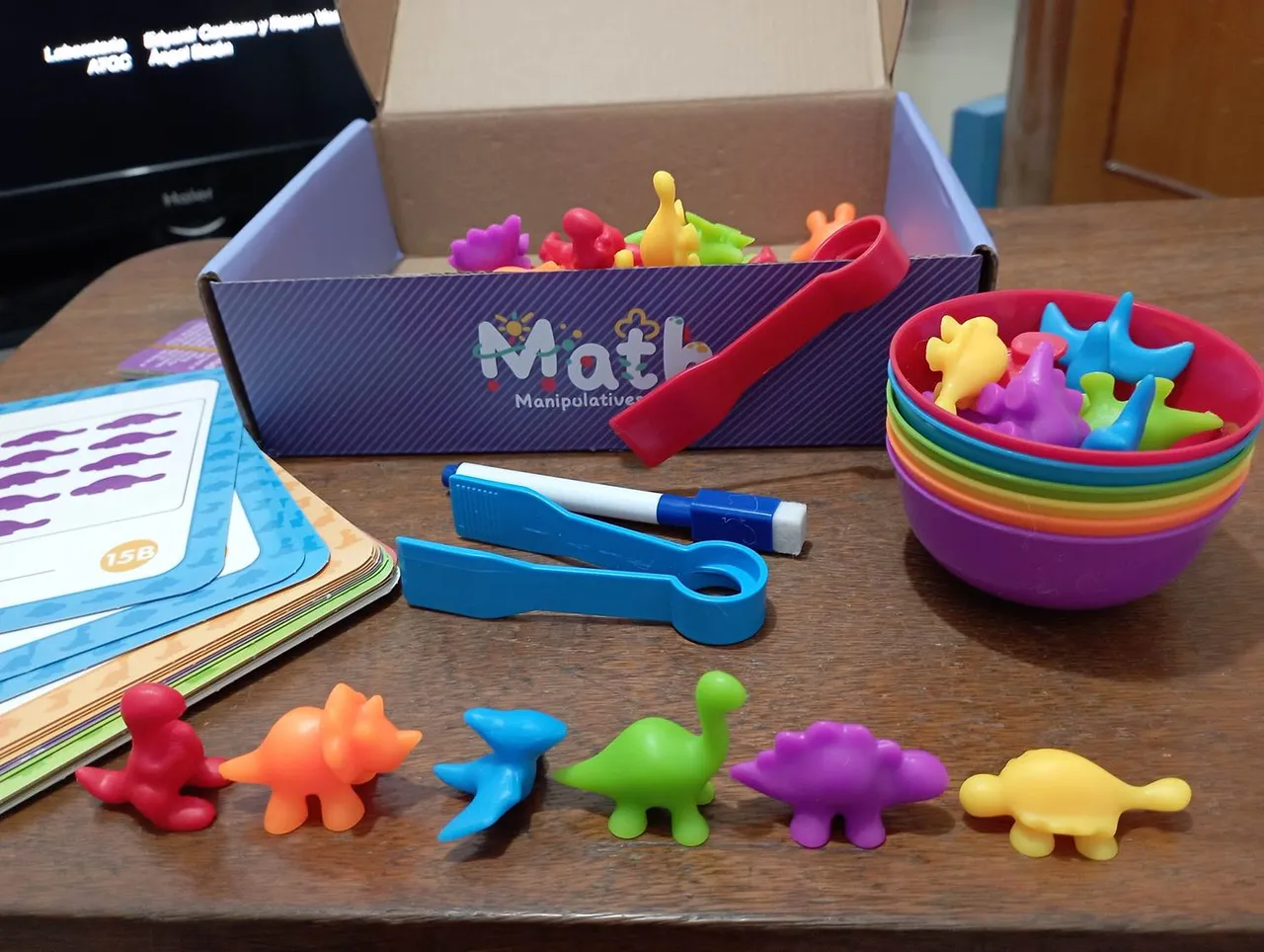
Classification of Sinosaurs.



This is the self-evaluation sheet for the work session.


Final note:
Self-instructional, cognitive/behavioral-based programs do not suit all children equally. The characteristics of each development are different, with aspects more permeable than others. Experience has allowed me to assess, from the evaluation, which is the most suitable procedure. It should be noted that for each child there is a different approach available; There is an answer for every situation.

It has been very pleasant to write for this community and its people.
About the images: the photographs belong to my archive and were taken with my Redmi11 phone. They belong to the activities that I do daily with the children.
I made the paragraph separator and the banner with the Powerpoint program.
